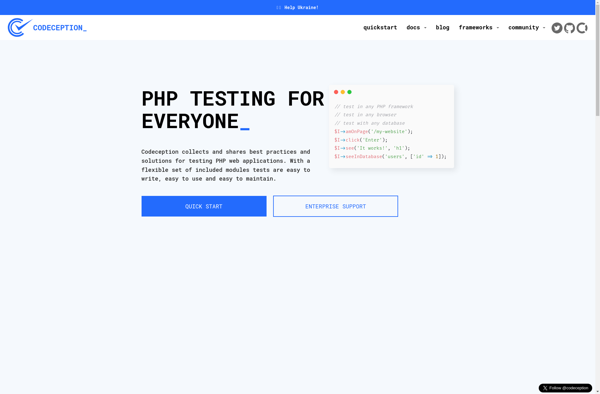Description: Codeception is an open-source PHP testing framework that allows you to write acceptance, functional, integration, and unit tests for your web applications. It provides an intuitive interface and powerful tools to make testing PHP applications easier and faster.
Type: Open Source Test Automation Framework
Founded: 2011
Primary Use: Mobile app testing automation
Supported Platforms: iOS, Android, Windows
Description: CrossBrowserTesting is a cloud-based web application testing tool that allows users to test their websites and web apps across various browsers, operating systems and devices. It aims to provide comprehensive cross-browser compatibility testing.
Type: Cloud-based Test Automation Platform
Founded: 2015
Primary Use: Web, mobile, and API testing
Supported Platforms: Web, iOS, Android, API

